Self-Care for Educators: Battling Burnout Amidst Uncertainty
by Chris Ryan, Executive Director, Product Strategy, Kaplan Admissions Group | June 1, 2020

As we wrap up the semester and head into the summer, we still don’t know what the coming fall will look like. At the thought of the next school year, we might already feel exhausted—especially since we’ve been giving it our absolute all these past two-plus months. And it’s been imperfect, to put it generously. As dedicated educators, we hold ourselves to high standards. Thinking back over the last few months can activate rumination and even regret. Meanwhile, thinking forward to the cloudy future ahead can spark feelings of worry and anxiety.
What are effective ways to recharge ourselves over the next period of time, so that we come back refreshed and revitalized? How do we reflect effectively without becoming overwhelmed in regrets and other negative feelings? How do we make plans when the ground is still shifting unpredictably?
Self-Care is Self-Compassion… and Other-Compassion Too
The term “self-care” is loaded. It can sound indulgent, even privileged, as if it were accessible only to a chosen few. Celebrities haven’t always helped the case, especially as they recline in a gorgeous bath with rose petals and tell us glibly that “we’re all in this together.”
It’s fine to reject that kind of behavior. That’s not you; you’re cut from different stock, the kind that goes out and takes care of people in need, in a very real, authentic way. That’s what makes the concept of self-care so hard for us caregivers to accept.
Let’s reframe the concept. Self-care is not self-ish. It’s a necessity. Speaking strictly from a utilitarian point of view, remind yourself that you can’t take care of others if you don’t take care of yourself. We might not get on airplanes again for a while, but it’s worth repeating the old safety phrase: put your own oxygen mask on before you help someone else with theirs. It’s a well-worn statement for a very good reason.
If you still can’t stomach “self-care” as a term, replace it with “self-compassion.” To begin with, compassion itself is not just a feeling. It’s empathy plus action. It’s a force that drives you in your educational work, to actually do the not-fun-and-really-hard parts of that work.
Now put a “self-” on the front of that concept. Self-compassion means actually being as kind to yourself as you’d be to a good friend. What would you counsel a friend to do in your situation? Your guidance and approach would typically be gentler, and for that matter more effective, than it might be to yourself. So why not talk to yourself as you would to a friend?
Check out UT Austin professor Kristin Neff’s website for more on this topic from both an academic and a practical perspective.
Re-Establish Boundaries Around Our Time and Our Space
We’ve all seen and felt it over the last few months. Demands have grown on our time like weeds. And our spaces have been thoroughly invaded. One educator put it to us that she almost felt more calm going to work in an ER than teaching remotely at home. Why? The ER is a more normal and controlled environment… and that’s kind of crazy.
With personal boundaries falling, one useful response can be to ride the wave (up to a point). There’s no way to keep all the old barriers up, so we can embrace the opportunity to bring more of ourselves to more parts of our world, so to speak. Strict, one-hundred-percent compartmentalization between all our separate lives is an impossible standard these days, and striving for it will bring failure and frustration. Go ahead and let students into your kitchen, as we talked about with our friend Chris Williams previously.
That said, we can’t let our students roam all over our house and curl up in every nook! We need to protect a certain amount of space and time for ourselves. This is completely appropriate self-care, or self-compassion if you prefer. Here are some specific ideas:
- Take an “Alternate Commute” as a Decompressor
We used to have commutes that served as buffers between our professional and personal lives. Let’s recapture those buffers. Stand up, move away from your computer, go outside, and read several pages of a book. Or take a looping walk around the block. Allow yourself physical and mental downtime between intense periods of “uptime.”
- Make Even Little Spaces Your Own
* Create a personal comfort zone, even if it’s the temporarily available corner of the kitchen table for a Zoom meeting. Home may not feel like a separate sanctuary anymore. But even a special mug, a blanket, a photo, etc. can place a metaphorical stake in the ground: here I am, and I’m good here.
* Claim a bit of online space as well. For instance, put up a fun virtual background on Zoom. It might sound strange, but even selecting a different “place” in the wide world to be has a surprisingly freeing quality. We can all dream of that beach you’re on.
- Set Clear and Kind Boundaries Around Communication and Availability
* Take advantage of “away” features in your calendar and email to put up blockers around times you won’t be available. You’re far from the only one using these signals! It’s okay to let people know that you can’t respond during certain hours. You cannot always be on, nor should you try to be.
* You can also model restraint in this regard. If you do happen to be writing a work email at 2 am, consider using the delay feature to have it go out at 9 am. Or save it as a draft and send it manually in the morning.
* These practices send a good symbolic message within your organization as well. You might be surprised at how others follow suit.
* If you need to be more explicit about boundaries with certain people, don’t be afraid to do so. What you might think of as a deliberate invasion might just be thoughtlessness on someone else’s part. And if that special someone still doesn’t respect the lines, do what you have to do to escalate or ignore. You’re the only one who knows your own boundaries, and you have to protect them.
- Be Ready to Pick a Plate to Drop
* Despite our best efforts, sometimes we simply can’t get everything done and meet everyone’s expectations, legitimate or not. In the rough seas we’re all navigating, sometimes we’ll just have to let a plate fall to the ground.
* Given this reality, isn’t it better to pick the plate in advance? That way, you minimize the damage, and you regain control over the situation. You might have to fling that chosen plate at the shelf and hope for the best, but we just can’t do it all… and we need to be compassionate with ourselves about that fact. We are human, after all.
Read "Keep It Burning Bright: How to Hold Your Fire and Avoid Burnout" for more ideas.
Build Resiliency by Looking for New Ways to Connect with Your Students and Each Other
As caregivers, we worry about those we care for. And we internalize their worries too. Here’s how other educators have put it:
“I have kids that I saw on a very regular basis that now I can't even get in touch with. Trying to compartmentalize that worry is really hard.”
“As a higher education career coach, I am working overtime to meet the needs of my recent grads whose job offers are now off the table. They feel abandoned.”
So how do we absorb and deal with all these worries?
It bears repeating: be kind and candid with others. We’re all going through this experience: your students, their families, as well as your colleagues. Communicate more, not less. This will help you cultivate resilience, which is in part embedded in our relationships.
To that end, look for new ways to connect. We’ve talked about addressing “Maslow over Bloom” before. We’ve got to recommit to that idea, while finding additional opportunities to hear and be heard. Hold Zoom office hours, open up Slack chats, even send an email to a group, in order to surface whatever is going on. Keep reaching out to your students and colleagues.
Acknowledge Negative Thoughts and Let Them Pass
How do we deal with those negative thoughts that keep coming up? Maybe you take an “alternate commute,” but you find during your walk that your brain is on fire with difficult feelings about the past, the future, or both.
Imagine a sky with clouds moving across. Take a deep, slow breath and attach that negative self-talk to a cloud. Acknowledge the thought as something that came into your mind. And then let the thought pass, just as a cloud does.
These kinds of activities—acknowledging a negative thought and then letting it go, taking a breath to reset and anchor yourself back in the moment—are associated with the field of “mindfulness.” Like self-care, that term may be fraught these days. But whatever you call it, mindfulness can be a source of extremely useful practices.
There are lots of mindfulness resources out there; take a look. A little can go a long way.
From our guest Kimberly Strafford: Worrywoos focuses on social and emotional learning for kids, but the resources can be helpful for anyone.
For instance, Kimberly and her colleagues have put together:
- 10 Ways to Promote Self-Care in the Virtual World
- 10 Ways to Promote Self-Care in the Real World
- UCLA Mindful Awareness Research Center: Free guided meditations and app.
- Ten Percent Happier: Free live sessions every weekday at 3 pm ET.
- Other recordings: For instance, our colleague Logan Thompson.
For more educator resources to use in the digital classroom, read more articles on our blog.

Chris helps teams across Kaplan develop new products to meet evolving customer needs. After earning a physics degree from Harvard, he taught physics and chemistry for several years in three different high schools across the country. He then got an MBA at Duke (Fuqua) and worked as a management consultant at McKinsey. Returning to education in 2003, he joined Manhattan Prep, a small startup later acquired by Kaplan, and he’s remained happily in the test prep world ever since. It thrills Chris to help students rise to the challenges posed by these difficult tests.
See more posts by Chris Ryan, Executive Director, Product Strategy, Kaplan Admissions Group
